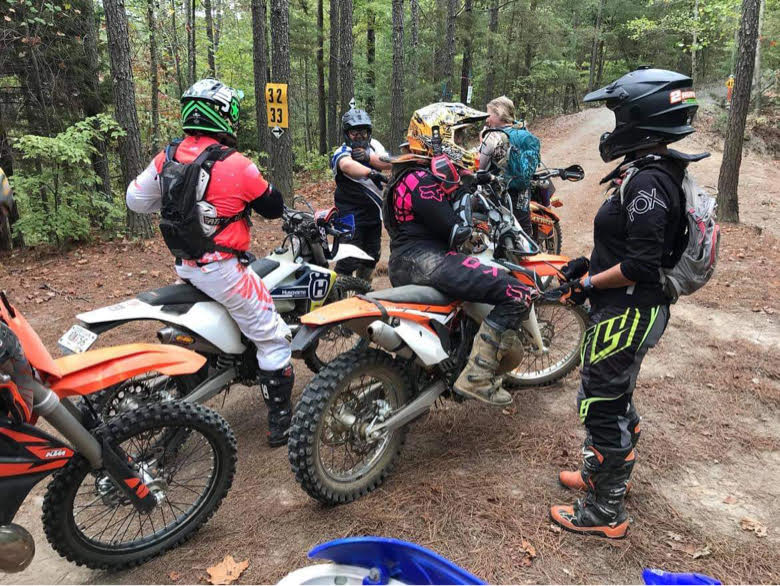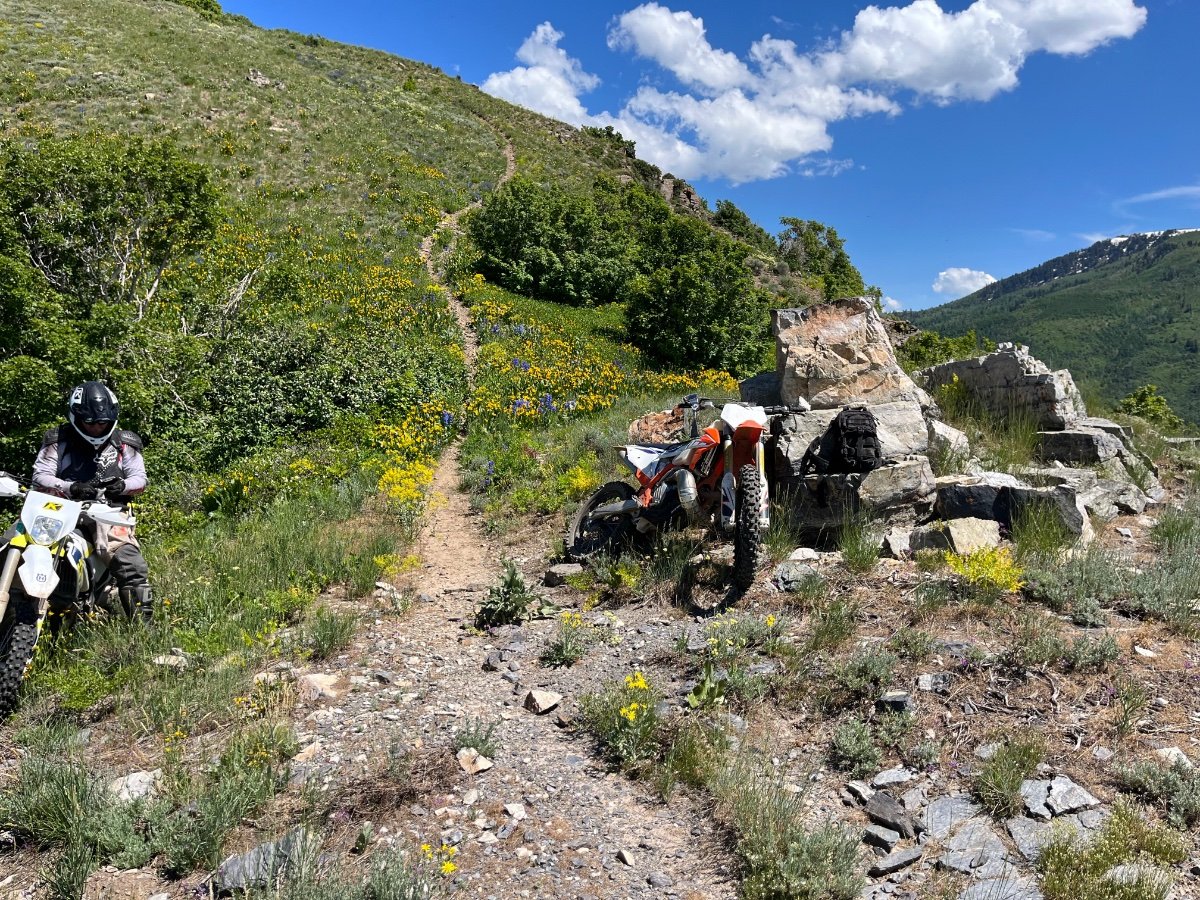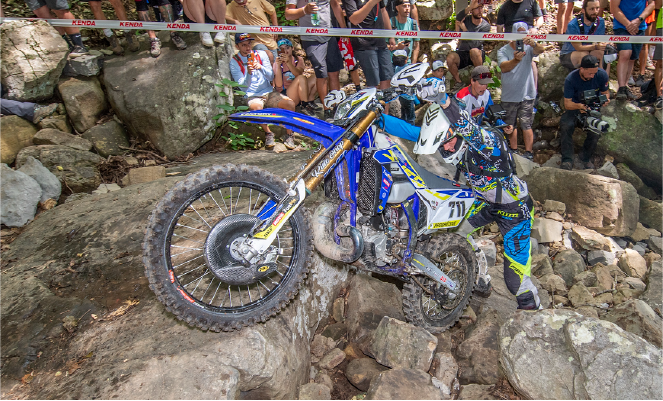A Guide to Dirt Biking Disciplines

Although “dirt biking” is often referred to as a singular activity, the sport is actually
divided into a host of various disciplines. The disciplines feature different terrain, different
skillsets, different riding experiences, and different equipment. From fast to slow, steep to
flat, mountains to mud pits, casual to intense—dirt biking offers riders an almost limitless
variety of styles and environments to suit every rider’s interests.
Below, we’ll outline the different riding disciplines that exist within dirt biking, what type of riders they suit, what types of bikes are best for each, and what racing opportunities exist within them.
Casual Trail Riding
“Trail riding” is a fairly generic term, but here we’re using it to describe entry-level trails that don’t require any specialized skills to tackle. This is where riders usually start when new to dirt biking, and for many, it makes up the bulk of their riding experience.
Trail riding is all about fun!
Rolling around a farm, campsite, or National Forest roads would all be considered casual trail riding.
Enduro/Woods Singletrack
 Deep in the woods, where "single track" is a literal term.
Deep in the woods, where "single track" is a literal term.Photo by Andrew Wheat Photography.
There are more enduro models on the market than any other type of dirt bike, and they are some of the most adaptable bikes you can own—they can handle any trail from smooth to intensely technical, and they can be modified to perform better in certain types of terrain or at higher or lower speeds, depending on the needs of the rider. The suspensions are generally stiffer and higher-tech than those offered on trail bikes, but they’re sprung much softer than motocross or cross country models that are set up for high speeds. Softer suspensions are preferred for true enduro courses, where speeds are lower, the courses are tighter, and the trails are littered with ruts, rocks, and roots that the suspension must contend with.
For casual trail riders looking to get into the next level of offroad riding, enduro-style singletrack trails are the typical progression. These trails don’t require extreme technical skills or speed, but they demand better accuracy and line selection thanks to their narrow width—your handlebars are frequently flirting with trail-side trees.
Enduro racing is a specific race format, but the term is also used more generally to describe offroad races held in the woods. The two primary forms of woods racing are hare scrambles and the enduros themselves.
Traditional enduro races use a specific format where the course is broken up into multiple sections (called “tests”) that each rider is timed on. The enduro format pits riders against the clock rather than bar-to-bar (physically racing the guy beside you). The premier enduro-format racing opportunity in the US is the NEPG (aka “National Enduro”) series.
Hare scrambles are bar-to-bar races where riders make laps on a 5-15 mile course through the woods. There are local hare scramble series in almost every state, where riders both young and old, novice and experienced, serious and casual come together to race on the weekends. These local races are a great starting point for the casual off-road racer. Some hare scrambles courses are wider and faster and fall more into the realm of cross country racing, while others feature tighter and more technical trails.
Cross Country
Cross country riding is faster paced than enduro, being held on trails that feature sweeping turns, long hill climbs, and grasstracks; the occasional motocross section, mud hole, or technical segment may also be seen. Cross country is held off-road, but the tracks are generally wide enough to accomodate high speeds.
Cross country is held off-road, but the tracks are generally wide enough to accomodate high speeds. Photo by Briarhill Photography.
To handle these higher speed courses, cross country bikes (abbreviated “XC” bikes) have stiffer suspensions and more aggressive power delivery than either enduro or trail bikes. Larger displacement four-stroke machines currently dominate the cross country racing scene (where their planted feel and smooth power shine), but two-strokes are still prevalent in the sub-pro levels.
Most enduro bikes are capable of hitting an XC-style course, but their softer suspensions may limit performance at higher speeds.
Motocross/Supercross
The most well-known and largest dirt bike racing discipline, motocross is the epitome of thrill. Modern motocross is held on closed-course tracks with man-made jumps, riders race head-to-head for 5-30 minutes at a time.Motocross (MX) is the outdoor version of the sport, held on permanent tracks where speeds are high, ruts are deep, and jumps are long.
 Motocross is the epitome of thrill.
Motocross is the epitome of thrill.Photo by Rachel M. Stroh.
Supercross (SX) is a newer derivation that was invented to create better spectator opportunities. It is held in stadiums on temporary tracks and features more air time, more technical jump sequences, and slower speeds than motocross. Formal supercross racing only exists at the professional level, and the term “supercross” generally refers to the pro supercross championship series.
Arenacross, which is a common prerequisite to supercross, is something of a motocross/supercross hybrid. It is held on man-made, indoor tracks that are typically tight and intricate.
Motocross bikes are purpose-built: they are powerful and have stiff suspensions—to handle the high speeds and jumping—that tend not to work well in slower off-road environments.
Mountain Singletrack
Mountain singletrack features steeper and rockier terrain than is seen in low-land woods singletrack and generally demands more developed technical riding skills to tackle. Mountain singletrack in the western United States will take you through everything from grassy mountainsides to steep rock faces to sandy washes, and trails come in varying degrees of difficulty. Many of these trails are found on public lands. Photo courtesy of Mike Keller.
Photo courtesy of Mike Keller. There is not a specific race discipline that falls into this category, but the skills learned tackling technical mountain trails lend themselves to both desert and hard enduro/extreme enduro racing.
Hard Enduro / Extreme Enduro
 Hard enduro is definitely "type 2 fun."
Hard enduro is definitely "type 2 fun."Photo by Larry Mayo.
This type of terrain requires specialized skills to tackle, including excellent clutch-control, balance, and wheel placement. Many of these skills cross over from the world of mototrials, and many of the top hard enduro riders throughout the world came from a trials background.
Hard enduro is typically slow-speed; sometimes snail-pace. Manhandling the bike is part of the game, and navigating a hard enduro course requires significant physical strength and mental fortitude. However, the techniques used to cross obstacles, pick through rock gardens, and reposition the bike with a foot on the ground are skills that can be practiced off-course, even at home. Mastering these practical and impressive techniques has become popular with a large segment of the riding community—even those who don’t actively race or ride hard enduro courses.
Desert
Desert riding is a unique beast. Combining both high-speed runs and slow, rocky portions, desert riding demands a wide range of bike skills. Due to the deep sand and long-distances traversed, the best desert bikes are geared high and have lots of power to dig through the sand. Close-ratio transmissions and small displacement engines are not well-suited to the desert. Photo by Mark Kariya.
Photo by Mark Kariya.
Endurocross/SuperEnduro
 It's an obstacle course...for dirt bikes!
It's an obstacle course...for dirt bikes!
In Europe, the FIM SuperEnduro Championship is the premier series. In the US, the AMA Endurocross series is the only competitive opportunity. Still something of a niche sport, endurocross isn’t as widespread as more traditional racing formats, although it is growing in popularity along with the hard enduro explosion. Endurocross practice tracks are popping up at private riding venues with increasing frequency, and many riders practice “endurocross” in a casual capacity by practicing isolated obstacles and the relevant techniques.
Hillclimbing
This is a specialized form of competition that is exactly what the name suggests: going up hills. However, these hills are taller, longer, and steeper than you might think it was possible to traverse on a dirt bike. Hillclimb machines are custom bikes with extended swing arms and hot rod engines. In the author’s humble opinion, hillclimbing is the most entertaining dirt bike footage you can watch. Do yourself a favor and YouTube it.
Flat Track
Although the bikes at the top levels of flat track racing are custom machines, converting a motocross bike for flat track is a common practice in the 450cc and under classes. Flat track is held on a dirt oval, head-to-head, where riders sprint in laps…or, more accurately, they slide. As you might imagine, seeking traction on a flat track is challenging, and it’s faster to corner by sliding the rear wheel around and using body position to keep the resulting slide under control. Flat tracking at AMA Vintage Days.
Flat tracking at AMA Vintage Days.Photo by Steph Vetterly.
Ice Racing
The racing season doesn’t have to end when winter comes: enter, ice racing! Using metal spikes in the tires to create traction, motorcycles can race on frozen lakes or in man-made arenas. Ice racing is popular across the world. Run on oval tracks, it’s a race in the most traditional sense, and the racing style is considered similar to flat-track.Converting a dirt bike for ice racing can be done by buying a set of studded tires (or installing studs in your tires yourself), winterizing your bike, and making some suspension adjustments.
Trials (...not “trails!”)
Observed trials, or mototrials, is a specialized type of riding done on specialized machines. Like hard enduro, trials is focused on very technical offroad terrain and obstacles. U.S. trials pro Josh Roper making it look easy. (It isn't.)
U.S. trials pro Josh Roper making it look easy. (It isn't.) Photo by Steph Vetterly.
Although vintage trials bikes more closely resembled the other dirt bikes of the time, modern trials bikes have become very specialized and are designed to hop around on obstacles and be supremely nimble, allowing riders to execute physics-defying stunts. Modern trials bikes have limited suspension travel, soft suspensions, short wheelbases, and no seat. They can weigh as much as 100lbs less than full-sized dirt bikes.
Trials is often seen as a valuable cross-training opportunity since it teaches riders excellent clutch, throttle, and brake control, as well as how to use your body to create precise inputs to the bike. Trials competitions are widespread through the world, although it is something of a niche sport in the US. Rather than being time-based like a traditional race, trials events are scored by how well a rider goes through a series of “sections,” with “gates” that the rider muss pass through that are specific to their skill level. Touching a foot to the ground is penalized, as is stalling, falling, or missing a gate. The rider with the lowest cumulative score wins.
 Trials takes precision and guts in equal measure.
Trials takes precision and guts in equal measure.Photo by Steph Vetterly.
On the international stage, the TrialGP series is the premier series held on natural terrain, and the X-Trial events offer an incredible impressive indoor spectacle. Trials clubs exist at the local level to give everyone from beginners to local pros a chance to compete, as well.